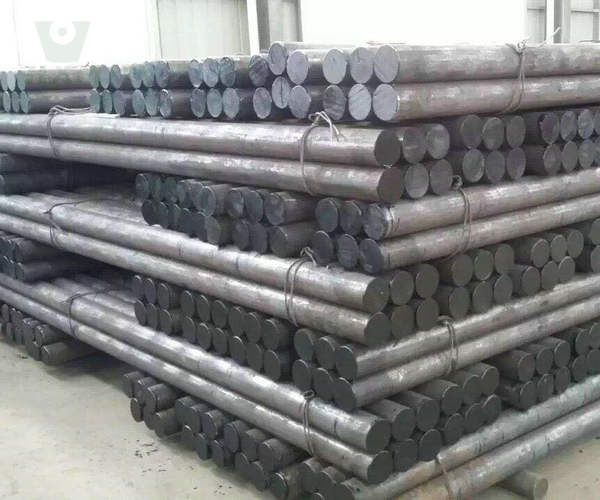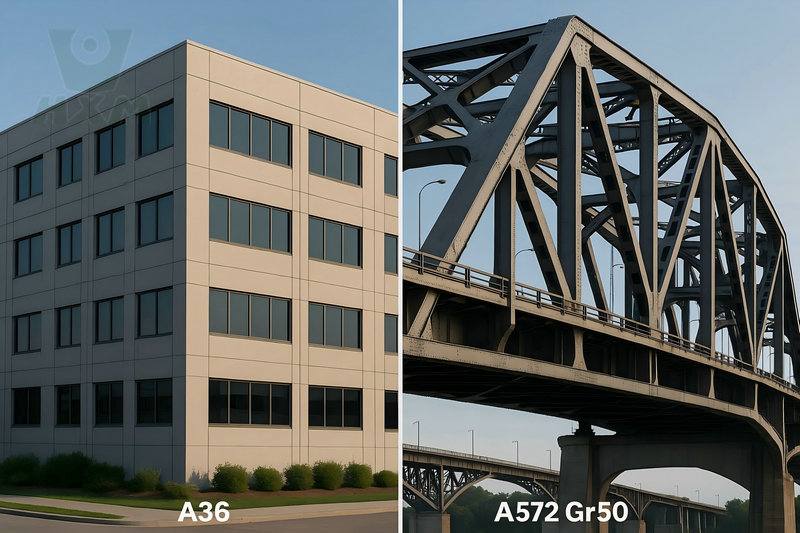
In the demanding world of manufacturing, the performance and lifespan of tool and die steels are paramount. Cryogenic (cold) treatment has become a vital post-quenching process to maximize these properties. By transforming retained austenite into martensite, this process significantly enhances hardness, wear resistance, and dimensional stability.
However, when executed improperly, cryogenic treatment can introduce severe defects, such as cracking and deformation, rendering expensive die components useless.
At Huaxiao Metal, we don’t just supply premium-grade tool and die steel; we provide the technical knowledge to ensure our customers succeed. This guide outlines the essential methods for preventing defects during the cold treatment of die steel.
Understanding the Core Challenge: Retained Austenite
After conventional quenching, a certain amount of soft, unstable austenite phase remains in the steel’s microstructure. This “retained austenite” is undesirable because it can:
Reduce the overall hardness and wear resistance of the tool.
Transform over time or under stress, causing dimensional instability and unexpected changes in the tool’s shape.
Cryogenic treatment’s primary goal is to cool the steel to sub-zero temperatures (typically -120°F / -80°C or lower) to force this retained austenite to transform into hard, stable martensite.
Common Defects and Their Root Causes
The most catastrophic defect is cracking. This is almost always caused by uncontrolled thermal stresses combined with the volumetric expansion that occurs when austenite transforms to martensite. Other issues include insufficient hardness gain and poor dimensional control.
Let’s explore the proven strategies to prevent these problems.
Key Strategies for Defect-Free Cold Treatment
Success lies in meticulous process control, from material selection to the final temper.
Start with High-Quality Steel Material
The entire process begins with the steel itself. Using a high-quality die steel with a fine-grained structure and minimal impurities is non-negotiable. Steels with poor cleanliness or internal micro-cracks are far more susceptible to failure during the stresses of heat treatment.
Huaxiao Metal guarantees that our tool steels (such as D2, A2, and H13) are sourced from top-tier mills and meet stringent quality standards, providing a reliable foundation for any thermal processing.
Optimize the Austenitizing (Quenching) Process
Before cold treatment, the steel must be properly quenched.
Control the Temperature: Avoid overheating during the austenitizing stage. Excessive heat can cause grain growth, which increases brittleness and the risk of cracking.
Ensure Uniform Heating: Uneven heating leads to non-uniform structures, creating internal stresses that become problematic later.
Timing is Critical: Bridge Quenching and Cold Treatment
This is one of the most critical steps. The cold treatment must be performed immediately after quenching, once the part has cooled to room temperature (approx. 70°F / 20°C).
Any delay allows the retained austenite to stabilize, making it much more difficult to transform later. This stabilization reduces the effectiveness of the cryogenic process and increases internal stress, elevating the risk of cracking.
Control the Cooling Rate
Do not rush the cooling process into the cryogenic chamber. The part should be cooled slowly and steadily to the target sub-zero temperature. A rapid temperature drop induces massive thermal shock, a primary cause of cracking, especially in parts with complex geometries or sharp corners.
The Importance of Proper Tempering
A part emerging from cryogenic treatment is in its hardest but also most brittle state. It is highly stressed and extremely susceptible to cracking. Tempering is not optional; it is essential.
Immediate Tempering: The part must be moved to a tempering furnace as soon as it returns to room temperature from the cryogenic process. Do not let it sit.
Multiple Tempers: For most high-alloy die steels, a single temper is insufficient. A double or even triple temper is often required. The first temper relieves the stress from martensitic transformation. Subsequent tempers condition the newly formed martensite and further reduce residual stress, resulting in a final product that is both hard and tough.
Partner with an Expert Huaxiao Metal Supplier
Preventing defects in cryogenic treatment is a combination of science and strict procedural discipline. While the heat treater plays a crucial role, the journey to a high-performance tool begins with selecting a superior raw material from a knowledgeable supplier.
The quality of your die steel dictates its ability to withstand these extreme temperature cycles. A reliable supplier like Huaxiao Metal provides not only certified materials but also the technical partnership to help you navigate complex processes and achieve optimal results.
FAQ
Is cryogenic treatment necessary for all die steels?
Not for all of them, but it is highly recommended for high-alloy tool steels, such as D2, A2, M2, and other high-carbon grades. For these steels, the goal is to achieve maximum hardness, wear resistance, and dimensional stability, which is precisely what cryogenic treatment enhances. For some lower-alloy or less demanding applications, a standard quench and temper cycle might be sufficient. The choice depends entirely on the performance requirements of the final tool.
What is the difference between "cold treatment" and "deep cryogenic treatment"?
While the terms are sometimes used interchangeably, there is a technical distinction. Cold Treatment generally refers to cooling parts to around -120°F (-80°C). Deep Cryogenic Treatment (DCT) is a more intensive process, cooling the steel to liquid nitrogen temperatures of -300°F (-185°C) and often holding it there for an extended period (20-24 hours). DCT aims for an even more complete transformation of retained austenite and the precipitation of fine eta-carbides, which can offer a superior improvement in wear resistance.
Does cryogenic treatment make the steel more brittle?
This is a common and valid concern. Immediately after being removed from the cryogenic process, the steel is indeed in its hardest and most brittle state. This is why immediate and proper tempering is absolutely critical. A correctly executed full cycle—quenching, cryogenic treatment, and multiple tempers—will result in a final product that is not only significantly harder but also tougher and more durable than one that was only quenched and tempered. The tempering process is essential for relieving stress and increasing toughness.
Can you cold treat a tool that has already been used or tempered?
It is generally not recommended. The process is most effective and safest when performed on a freshly quenched part. Attempting to cryogenically treat a tool that has already been tempered and put into service is unlikely to yield significant benefits because the retained austenite has stabilized. More importantly, it can create new internal stresses in a finished part, leading to a high risk of cracking or failure.
How can we be sure our raw material is suitable for cryogenic treatment?
This is where partnering with a reliable die steel supplier like Huaxiao Metal becomes crucial. We provide complete material certification and traceability, ensuring your tool steel is clean, has a fine-grain structure, and is free from internal defects. By starting with a certified, high-quality material, you build a solid foundation for the success of any subsequent heat treatment process.
In Conclusion
Cryogenic treatment is a powerful tool for unlocking the ultimate performance of die steels. By adhering to these key principles—starting with certified material, precise control over the quenching-to-cold-treatment timing, and meticulous tempering—you can reliably prevent defects and produce tools that deliver exceptional hardness, stability, and service life.
Have technical questions about die steel selection or heat treatment?
Contact the Huaxiao Metal team today for a quote or to discuss your specific application requirements.








